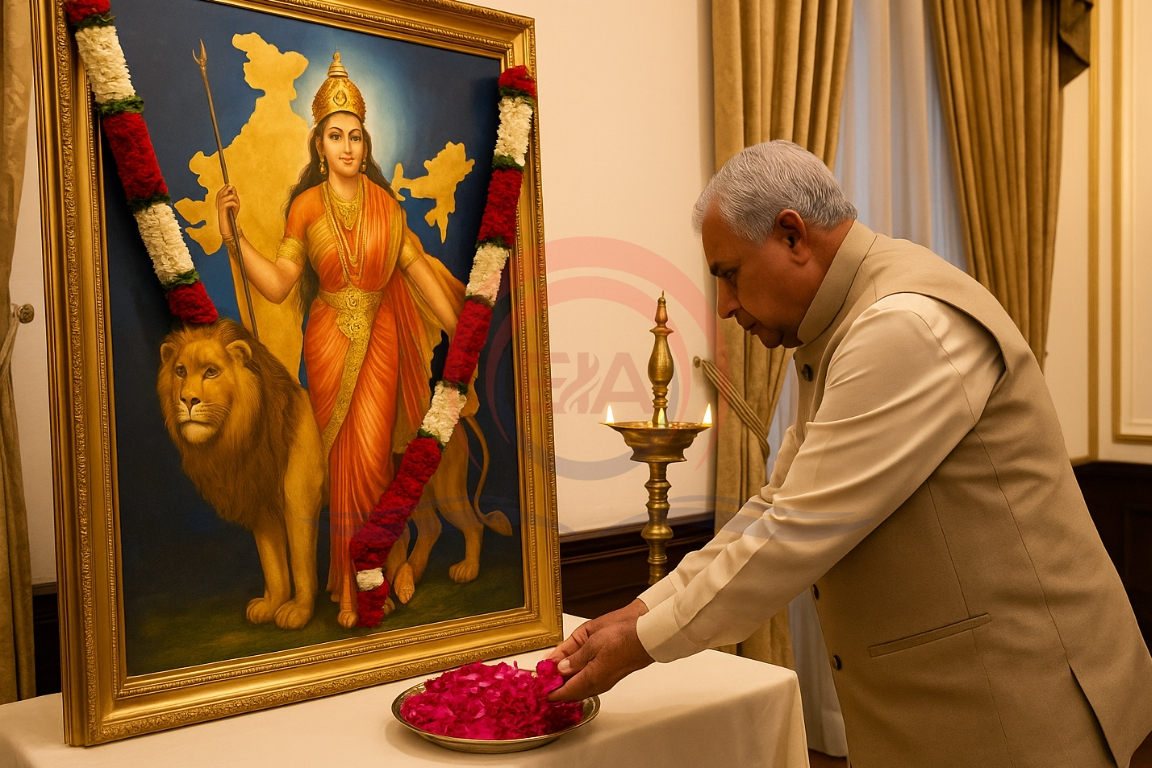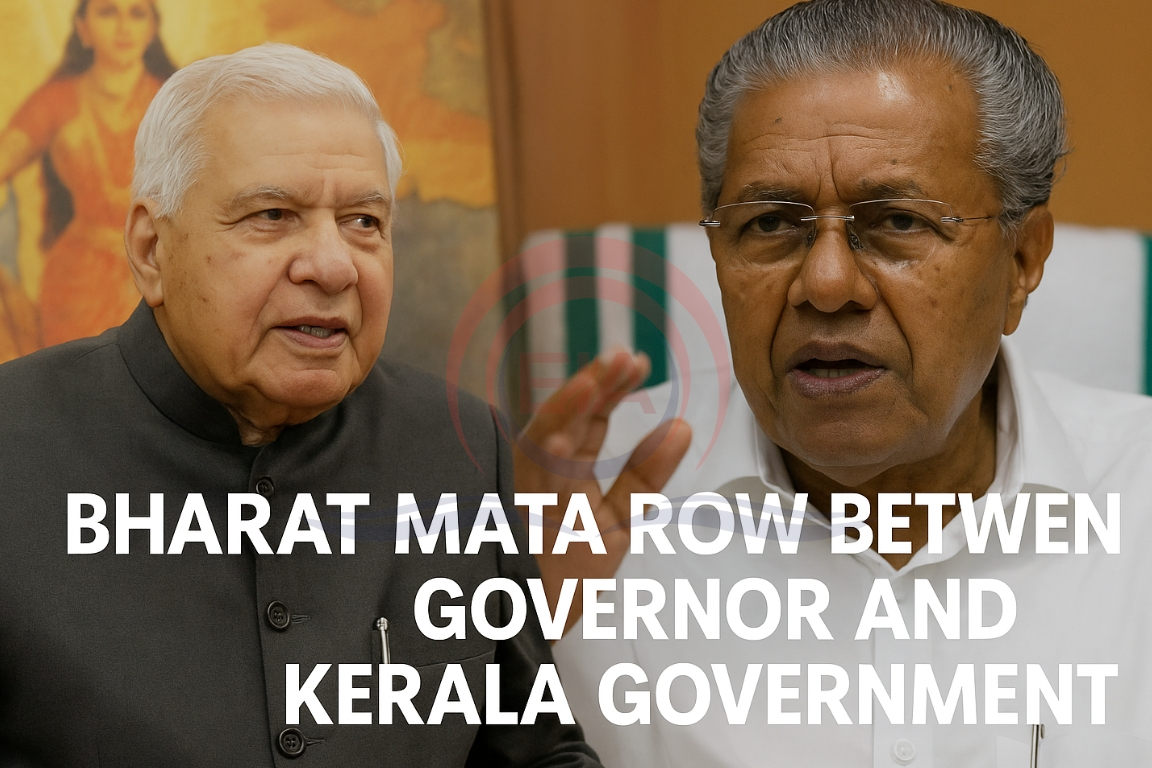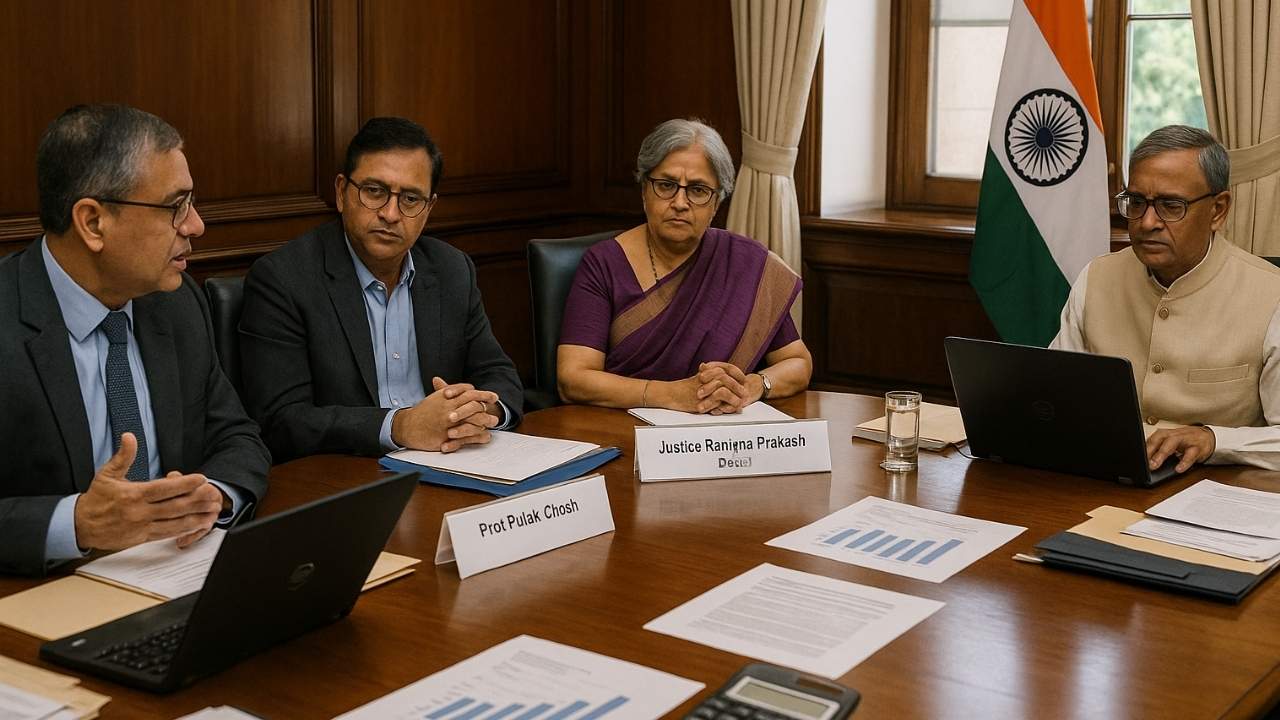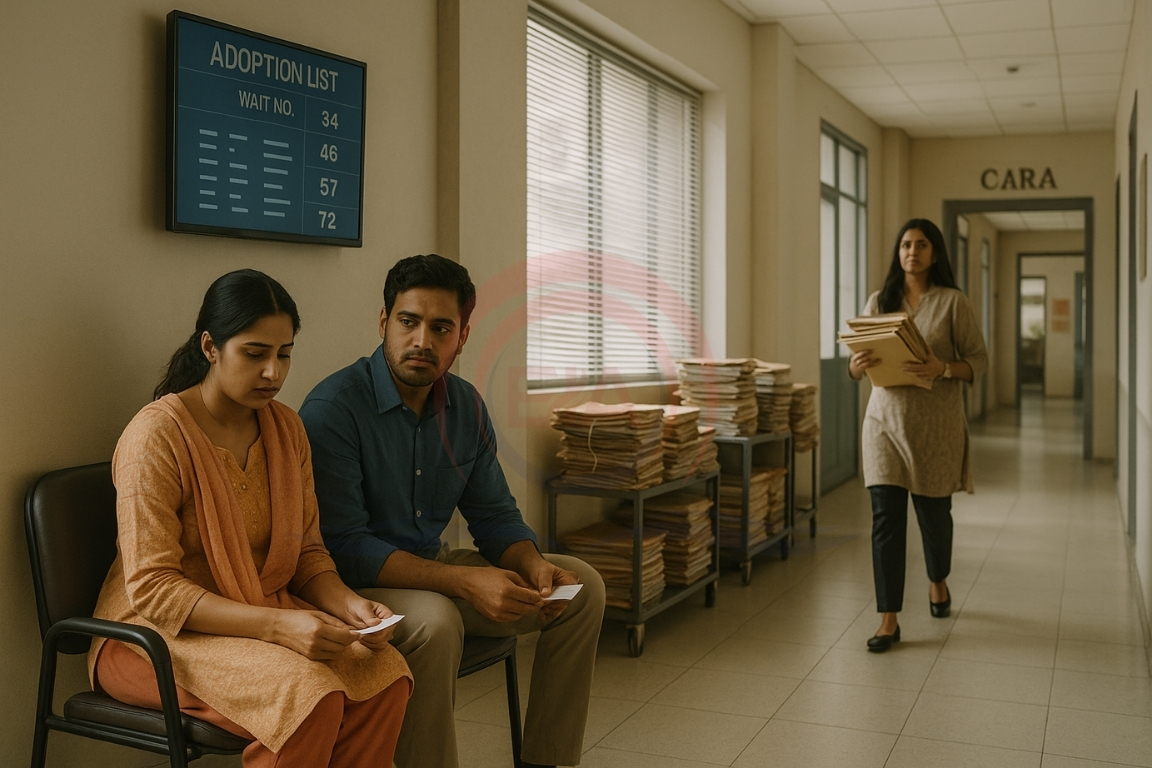A recent conflict erupted in Kerala between the Governor and the State government over a picture of “Bharat Mata” displayed at Raj Bhavan during official events. The state objected to its use, citing constitutional norms.
What Sparked the Controversy?
- A painting of Bharat Mata was displayed at Raj Bhavan, showing a woman in saffron clothing with a spear and lion, in front of a map of India.
- The Governor offered floral tributes and lit a ceremonial lamp in front of the picture before government functions.
- The Kerala government objected, saying it is not an official or constitutional symbol.
Constitutional and Legal Stand
- No Official Recognition: The Constitution recognizes national symbols like the flag, anthem, and emblem , but not any image of Bharat Mata.
- Governor’s Role: As per the Constitution, the Governor acts based on the advice of the elected state government.
- SC Interpretation: The Supreme Court has clarified that Governors hold no independent decision-making powers in matters concerning executive functions.

Historical Background of Bharat Mata Concept
- Origins: The image of Bharat Mata was popularized in literature (Bankim Chandra’s Anandamath) and art (Abanindranath Tagore’s painting in 1905).
- Freedom Struggle: The phrase “Bharat Mata ki Jai” was widely used during the independence movement, but no specific visual depiction was adopted.
- Pandit Nehru’s View: Nehru interpreted Bharat Mata not as a figure but as a symbol of India’s people — their struggles, hopes, and aspirations.
Why the Issue is Problematic
- Violation of Constitutional Norms: Displaying non-official symbols during government functions goes against constitutional propriety.
- Religious and Cultural Sensitivity: The image used resembles a Hindu goddess, which may not represent India’s diverse population.
- Institutional Conflict: The Governor–State tussle worsens Centre-State relations and disrupts governance.
Way Forward
- Respect Constitutional Limits: Raj Bhavan should only display symbols and follow protocols recognized by the Constitution.
- Maintain Neutrality: Constitutional authorities must avoid using visuals associated with specific political or ideological groups during official events.
- Dialogue and Restraint: Both the Governor and State should engage in constructive dialogue and avoid public confrontation over sensitive matters.
GOVERNOR
Article 153: Every State has a Governor.
- Article 154: Executive power of the State is vested in the Governor.
- Article 155–156: Appointment and term (5 years) of the Governor.
- Article 157–158: Qualifications and oath of office.
- Article 159: Oath or affirmation of office.
Executive Powers
- Chief Executive of the State—oversees administration and appointments.
- Appointment of key officials (e.g., Advocate-General, State Election Commissioners).
- Ordinance Power: Can issue ordinances when Legislature is not in session (Article 213).
Legislative Powers
- Summoning/Dissolving the State Legislative Assembly (Article 174).
- Addressing the first session each year and after general elections (Article 176).
- Assent to Bills: Can give assent, withhold, or reserve for President’s consideration (Article 200).
- Legislative Messages: Can suggest amendments to Bills (Article 200).
Discretionary Powers
- No Confidence: Deciding whom to invite to form government when no party has clear majority.
- Reservation of Bills: For President’s consideration in matters affecting national interest or High Court jurisdictions.
- Reporting: Can send reports to the President about breakdown of constitutional machinery (failure of State government).
Emergency Powers
- Report on Constitutional Breakdown: May inform the President under Article 356.
- President’s Rule: Based on Governor’s report, President can assume State functions.
Conclusion:
A recent conflict erupted in Kerala between the Governor and the State government over a picture of “Bharat Mata” displayed at Raj Bhavan during official events. The state objected to its use, citing constitutional norms.





